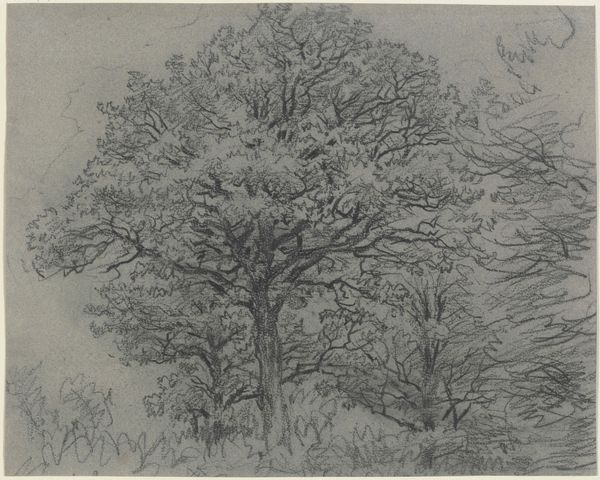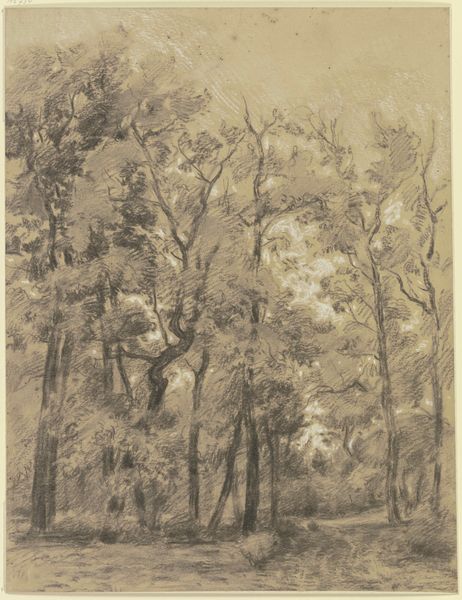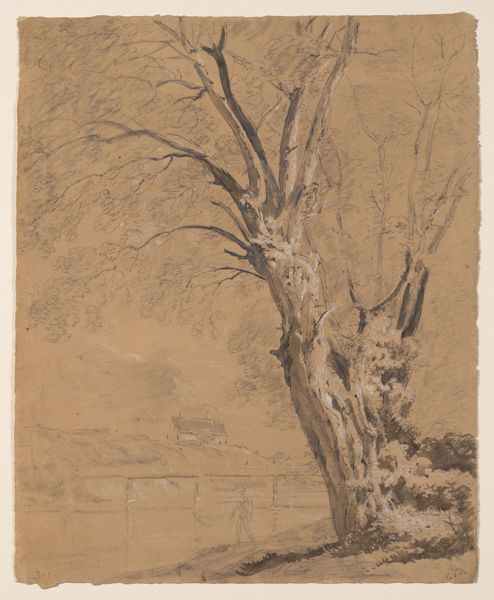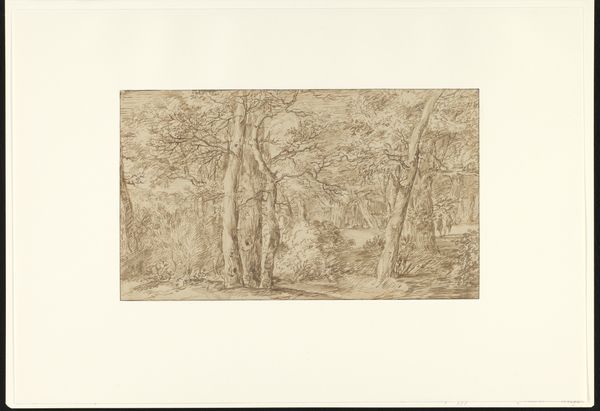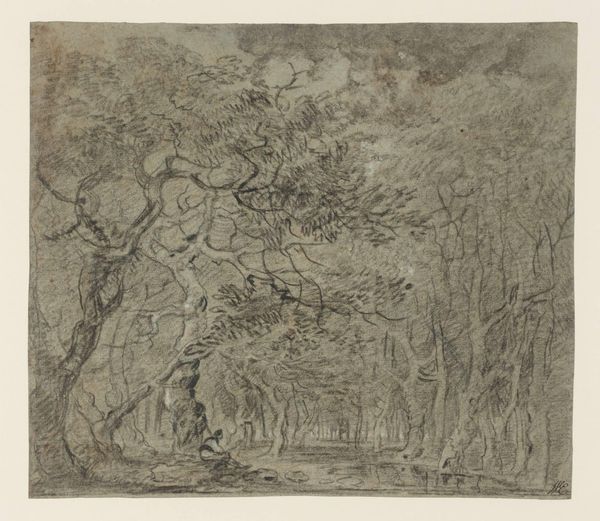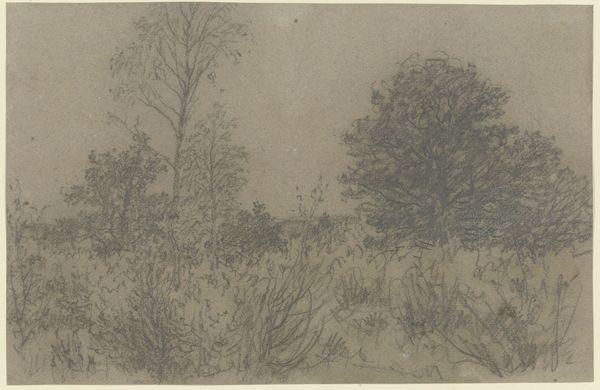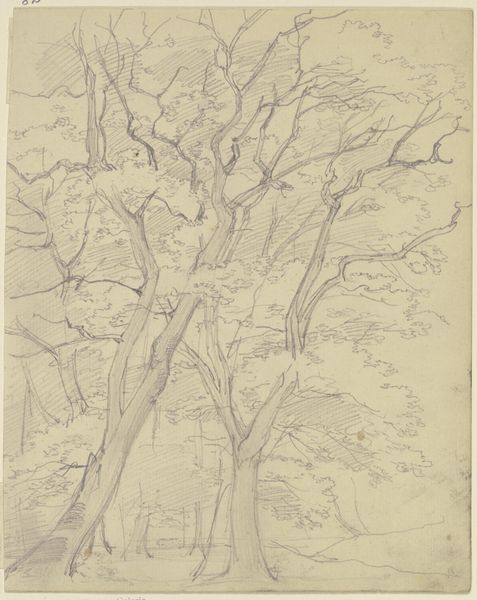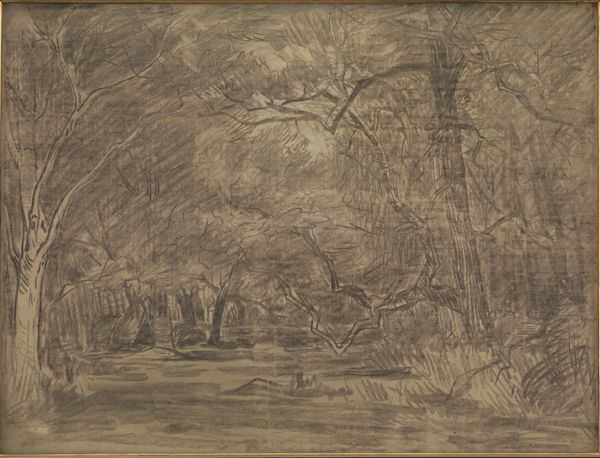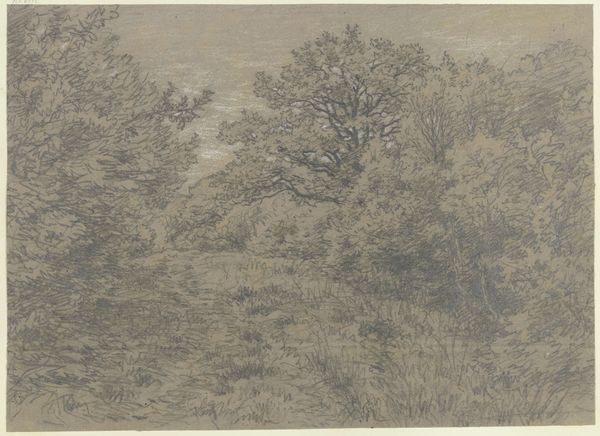
drawing, paper, ink
#
drawing
#
baroque
#
ink painting
#
landscape
#
paper
#
ink
Copyright: Public Domain
Anthonie Waterloo made this drawing, "Buchenstämme in hohem Grase stehend," likely during the Dutch Golden Age, a time when the Netherlands was undergoing significant economic and cultural growth. Waterloo lived in a society deeply shaped by its relationship to the natural world, where landscapes were not just backdrops but reflections of national identity and pride. Think of it as nature holding up a mirror to society. During this time, landscapes acquired a profound significance, embodying the spirit and character of the Dutch people. Waterloo’s choice to depict a dense forest scene is interesting. Instead of pastoral scenes, the drawing captures something wilder, less touched by human hands. There’s a sense of being enveloped by nature, a feeling that maybe Waterloo experienced himself. The contrast of light and shadow, is it a reflection of the social dynamics, or his own personal reflections during the economic expansion?
Comments
No comments
Be the first to comment and join the conversation on the ultimate creative platform.

